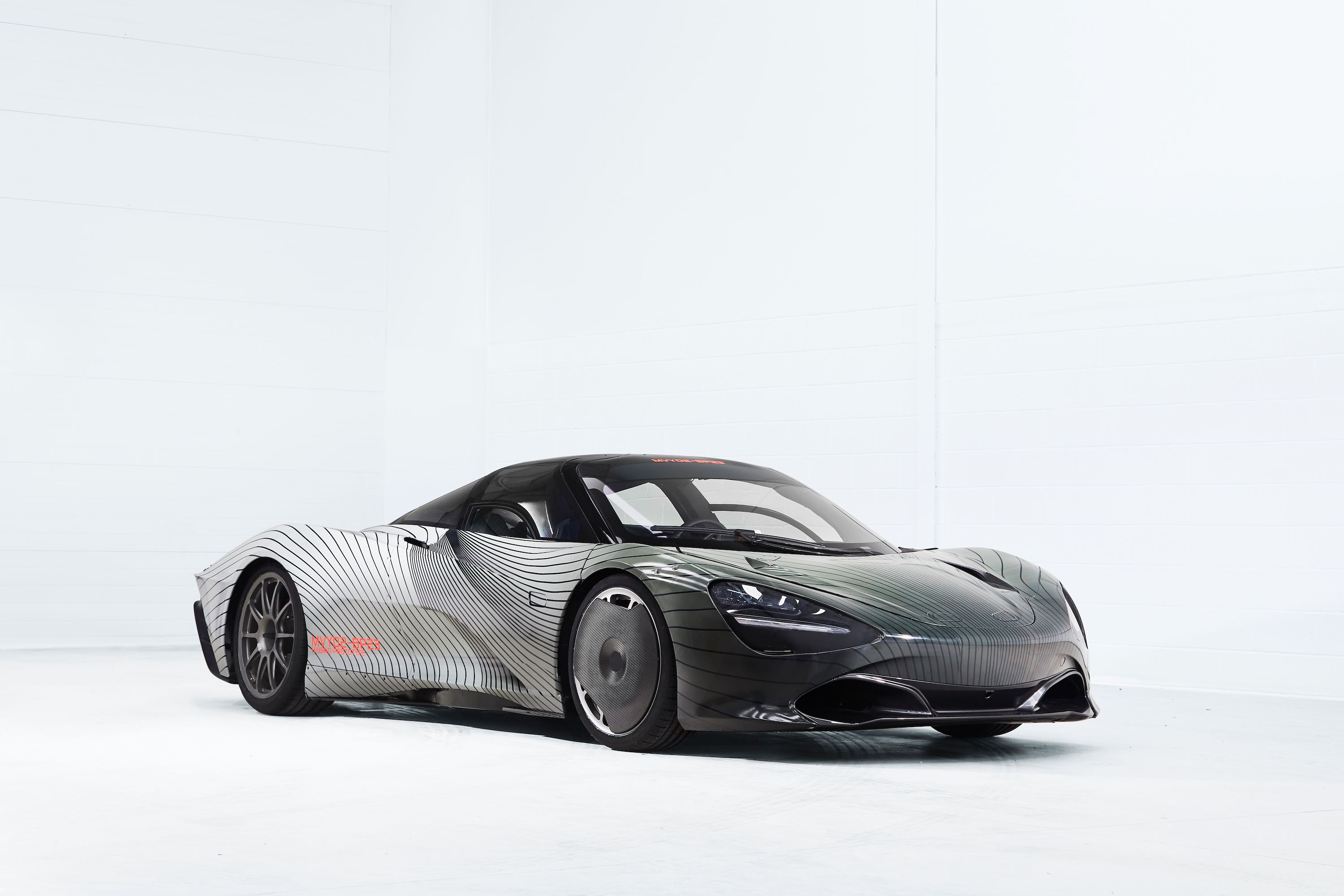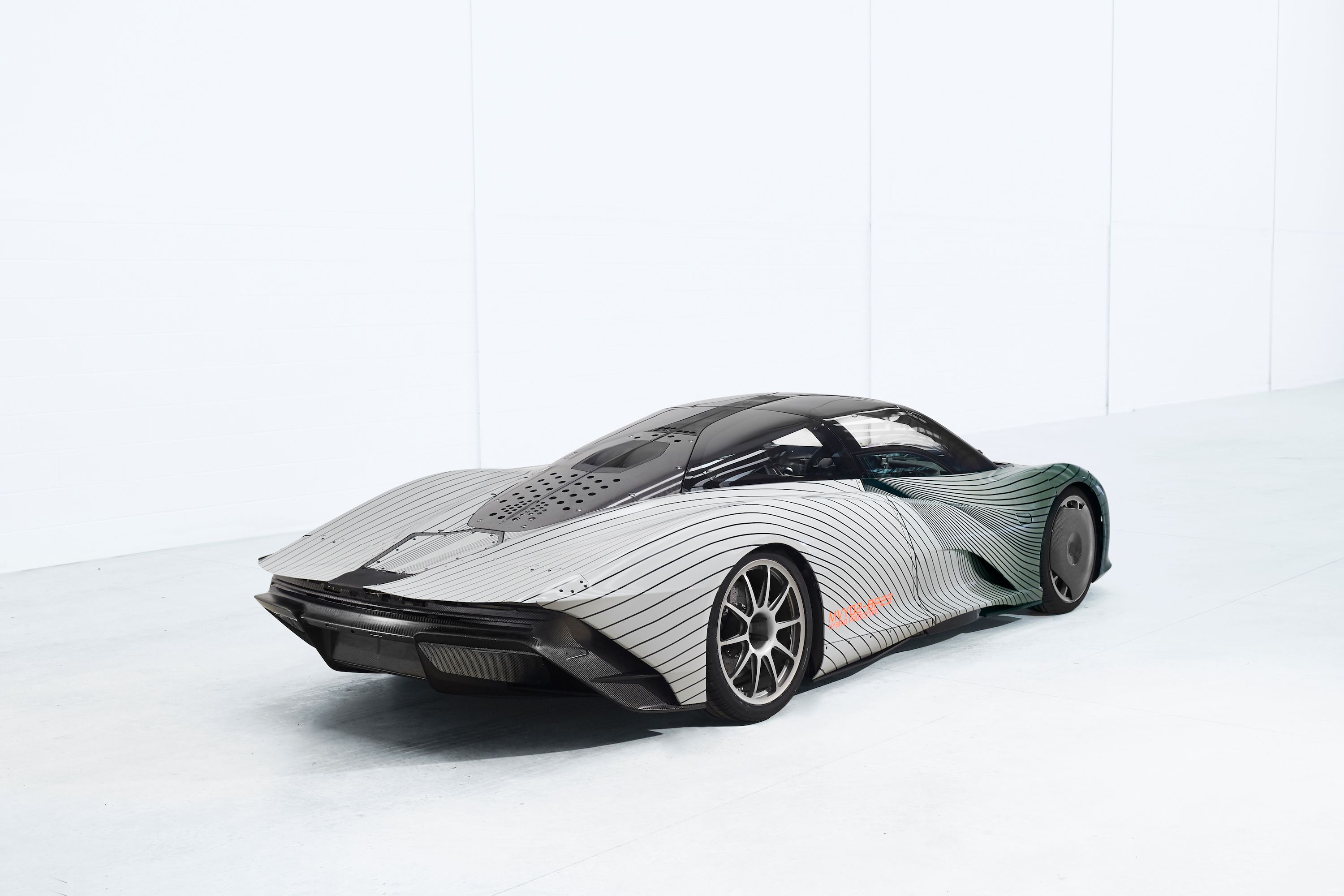Some 25 years after the McLaren F1 burst into the scene, it’s one true successor, the McLaren Speedtail has finally arrived. Ok, so the production Speedway isn’t here yet, but McLaren has unveiled the first hybrid powertrain prototype of the Speedtail, complete with an actual name that pays homage to the same street in which its predecessor, the F1, was conceived. The Speedtail prototype will no longer use its “MVY02” internal designation. Instead, we should all get used to calling it “Albert.”
A Fitting Nickname
It’s nice for McLaren to pay homage to the McLaren F1 by giving a proper name to the prototype version of the Speedtail. The car is that important to McLaren that naming its test mule after the stretch of road — Albert Drive in Woking, U.K. — that gave birth to the F1 doesn’t sound or feel silly at all. It is a fitting hat tip to a prototype that itself is unlike any other test mule we’ve seen from McLaren, or anywhere else, for that matter.
Albert is different because it’s actually as close a production-ready model as any test prototype you’ll see out in the streets. It’s riding on a production-specific chassis and it’s already been fitted with the gas-electric hybrid drivetrain that the actual production car is going to use. What that means is simple.
McLaren says the Speedtail’s hybrid drivetrain can produce upwards of 1,000 horsepower. With Albert already carrying the drivetrain, test drivers can test the car to its full performance capability. Granted, we don’t know exactly what it’s fully capable of, but McLaren has said that it can complete a run from 0 to 186 mph in a ridiculous 12.8 seconds. Not only is that faster than the McLaren P1 by 3.5 seconds, but it’s also almost 10 seconds faster than the iconic F1.
A Test Bed for New Technology
The significance of Albert’s place as McLaren’s first fully representative prototype isn’t just important for the production Speedtail, it’s also being used to test out a number of McLaren’s new technologies, a lot of which will probably make their way into other future McLaren models. The automaker’s head of vehicle development, Ben Gulliver, touched on that aspect of Albert’s purpose in a statement. According to Gulliver, “‘Albert’ will build on the invaluable work still being put in by earlier development cars, allowing us to sign-off vehicle attributes including chassis dynamics; brake performance; damper tuning; tires; NVH and aspects of ergonomics and comfort.”
Albert’s going to serve as a rolling version of ground zero in all that development. It’s fitting, then, for a car carrying a historically significant name to McLaren, that Albert isn’t wearing any of the traditional camouflage we normally see test mules get wrapped in. Albert’s different, not only because it’s wearing its own unique livery, but, more importantly, because there’s very little of its real body that’s disguised or completely hidden, altogether. You can tell from one look at Albert that it is, in fact, the McLaren Speedtail. The face gives it away. The body gives it away. Albert’s overall dimensions give it away. It’s unclear, though, if Albert’s going to wear the production Speedtail’s 18-karat gold hood badge with the carbon fiber inlays. My money’s on no, though I wouldn’t be surprised if it somehow does.
Intensive Testing
It goes without saying that Albert’s probably one of the most unique and most production-advanced supercar prototypes we’ve seen in recent years. McLaren even went all-out in creating a look that closely resembles the production model. That’s partly intentional — see those covered front wheel caps? — in part because a big part of the hypercar’s design is attached directly to its performance and aerodynamic qualities.
The aforementioned covered wheel caps, in particular, are nice nods to the OG speedtails from the 1930’s. Just goes to show that those old classics had covered wheels for a reason. The long rear section is also on full display. The car may have gotten its name from this section — a hat tip goes to the McLaren F1 GTR Longtail, too — but the long sliding design of the rear isn’t so much an aesthetic touch as it is an aerodynamic one.
Now that Albert’s been introduced, the car is expected to undergo serious testing in the coming months, before bleeding into next year. It will join a number of other prototypes in a year-long program that will include testing visits in Europe, North America, and Africa. For now, though, Albert is limited to testing in bespoke facilities. But there will come a time when McLaren finally gives it some run on public roads. Might be best, then, to be on the lookout for this one-of-a-kind unicorn mule, especially if it’s spotted doing tests near where you live.
Testing should last well into 2019, well before customers take delivery of the first production models in early 2020. Like the F1 before, McLaren is limiting production of the Speedtail to just 106 units. Each model carries a price tag of £1.75 million ($2.24 million) though that’s probably irrelevant at this stage of its development because all 106 units of the actual Speedtail are already accounted for.
Further Reading
Read our full review of the McLaren Speedtail.
Read our full story on the McLaren F1.



